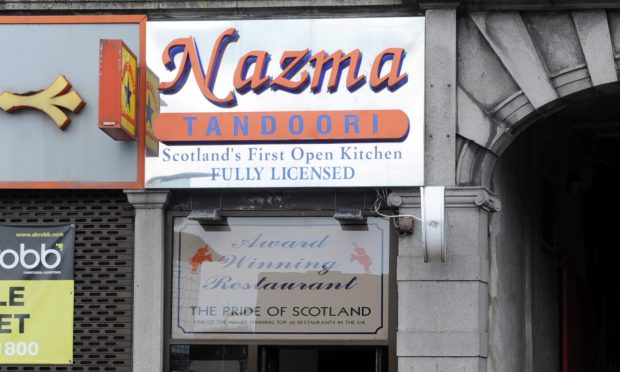
Gilgit Baltistan (GB) remains one of the few regions governed under a unique administrative framework. Historically, in Pakistan, any territory that voluntarily acceded has faced severe marginalization. Much like Bangladesh (former East Pakistan), which disintegrated in 1971, GB continues to endure the same challenges Bangladesh faced in its past.
In GB, people first celebrate Independence Day on August 14 alongside the rest of the Pakistanis. After three months on November 1, they observe GB Independence Day, remembering the sacrifices of heroes of the Gilgit Scouts who liberated the region from Dogra Raj and acceded to Pakistan. This year marks the 77th Independence Day of GB, making it essential to highlight its complex historical background to better understand the region’s ongoing marginalization and mainstream political alienation.
GB was fragmented into several small kingdoms before Dogra’s incursion into the high mountains. In Baltistan, the Maqpon, Yabgo, and Amacha kingdoms were predominant, while in the Gilgit region, the Mir of Hunza and Gohar Aman of Yasin held sway. The State of Jammu & Kashmir’s boundaries were first defined in The Treaty of Amritsar, signed in 1846 following Maharaja Ranjit Singh’s defeat in the first Anglo-Sikh war.
Martin Sokefeld a German Anthropologist has extensively examined the modern history of GB. In his research paper, Not Part of Kashmir, but in the Kashmir Dispute, argues that most of the region lies to the west and north of the Indus River. However, the eastern side of the Indus River is specified in Article 1 of the treaty.
China beefs up policy support to bolster foreign trade, investment Following Dogra’s incursions in the region, it failed to establish stable control due to its challenging terrain. Gohar Aman, the ruler of Yasin, expelled the Dogras from Gilgit twice, in 1848 and 1852, and held control of the region until he died in 1860. Subsequently, with the arrival of the British, in 1879 and 1889 the area was made Gilgit Agency, largely due to fear of a Russian invasion during the ‘Great Game’.
Between 1879 and 1935, the region was under dual control: the British-administered Gilgit Agency and the Dogra Raj’s Wazir Wazarat, each with separate jurisdictions. In 1935, the British acquired the region from the Dogras on a 60-year lease. However, on July 30, 1947, the British canceled the lease and returned control to Governor Ghansara Singh of the Dogra Raj.
The following table illustrates the power-shifting patterns throughout the century. The state of Jammu and Kashmir consists of five entities: Jammu, Kashmir, Laddakh, Gilgit, and Baltistan. Among these, only Jammu was the Hindu majority, and all others were Muslim-dominant entities except Ladakh where Muslims and Buddhists are mixed.
Prem Nath Bazaz a prominent Kashmiri Scholar, argued in his book, History of Struggle for Freedom in Kashmir, that the Dogras viewed Jammu as their home due to its Hindu majority, while regarding other regions as subjugated entities, thereby establishing Dogra imperialism. Raja Gulan Singh was unpopular in other entities of the Jammu & Kashmir state because of his brutal rule. SMEs shocked over hike in petroleum prices despite cut in world market During the partition, Maharaja Hari Singh decided to join India, which resulted in the deadliest revolt against him by the Gilgit scouts.
The Gilgit Scouts were a paramilitary force established in 1913 by the British government, composed of local people. Major Brown, the military commander who wrote The Gilgit Rebellion, emerged as a leading figure during the liberation war. Following a fierce revolt, the Gilgit Scouts successfully liberated the region from Dogra control, and on November 1, 1947, it was declared an independent state known as, ‘The Islamic Republic of Gilgit’, which lasted until November 16.
There is a lack of credible evidence regarding the period of the Gilgit Scouts’ revolt and the 16 days of an independent state. However, Major Brown cited several telegrams and conversations as primary observers in his book. He argues that the government of Pakistan did not make any decisions, despite receiving frequent telegrams and requests from the officials of the newly established state of Gilgit.
On November 16, Pakistan sent Sardar Alam Khan, a tehsildar, as a political agent in Gilgit and officially acceded the region to Pakistan. The Baltistan region was liberated in 1948 by the Gilgit Scouts and the local people. Carpet industry seeks govt support to boost exports The post-accession period has been very unfavorable for the people of GB.
Sardar Alam Khan assumed control of the region and swiftly enforced the Frontier Control Regulation (FCR), a draconian colonial-era law designed for tribal areas. On April 28, 1949, the government of Pakistan signed a secret treaty with representatives of Azad Kashmir, known as the ‘Karachi Agreement’. This agreement marked the first attempt to alter the status of GB and associate it with the Kashmir issue.
Unfortunately, in this agreement, the fate of 2.3 million people was decided without their representation. The table below illustrates the post-accession development in GB.
Since 2018, Gilgit Baltistan has been governed under a self-governance order that concentrates powers in the hands of the federal government. The people of GB are entangled in an unending constitutional dilemma. Like Azad Kashmir, GB lacks governance and legal autonomy, with no presentation in the National Assembly and vice versa.
The federal government has once again overlooked the region in the recent 26th Constitutional Amendment. Investment boost from Qatar signals bright future for Pakistan 77 years have passed, yet the local people hold the same patriotic spirit they had in 1947, despite ongoing negligence by the federal government. On August 14, the streets and bazaars are adorned with Pakistani flags, as people wear badges and chant slogans.
However, the people of GB need to move beyond dance and fireworks as the focus of their November 1 Independence Day celebrations. The Day should be observed as a reminder to the government officials of the true purpose behind accession to Pakistan and the sacrifices made by their forefathers. Ijlal Haider The writer is an MPhil scholar at the National Institute of Pakistan Studies (NIPS), Quaid-i-Azam University Islamabad.
He can be reached at [email protected].
pk Tags: gilgit baltistan at.














